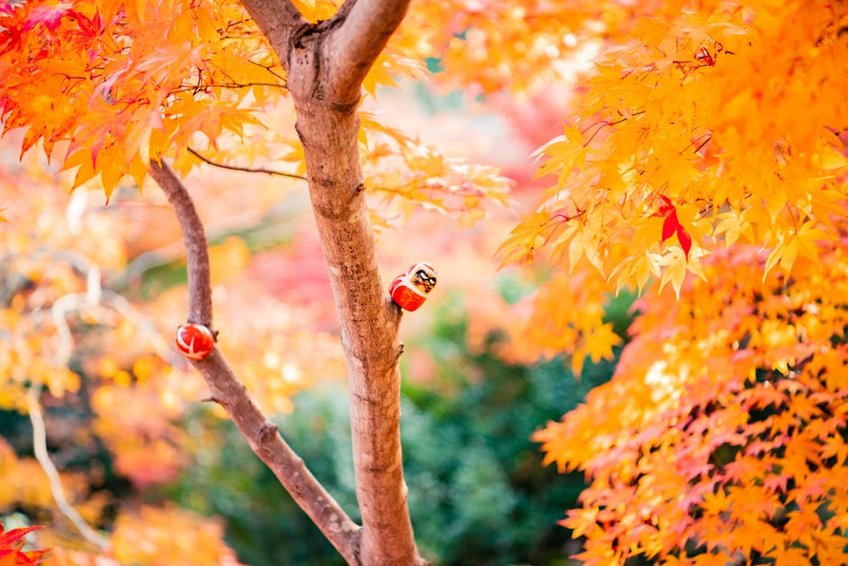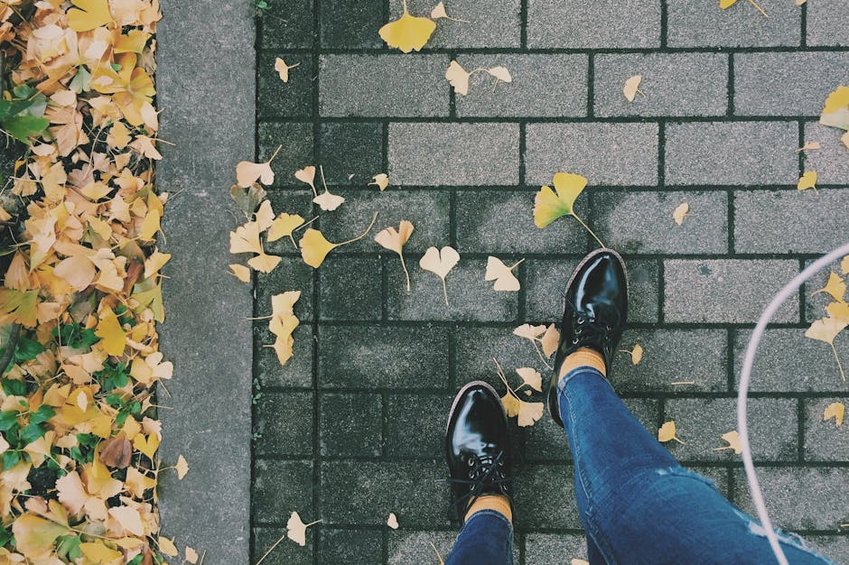Japan Momiji Autumn Leaves: Ultimate Fall Colors Experience
Japan’s momiji autumn leaves transform the landscape into a vibrant tapestry of red, orange, and gold each fall, creating one of Asia’s most spectacular seasonal displays. This natural phenomenon draws millions of visitors to famous sites like Kyoto’s temples and Hokkaido’s national parks between late September and early December. Our guide covers prime viewing locations, cultural traditions, and practical tips for maximizing your foliage adventure across Japan’s diverse regions.
Essential Autumn Foliage Information
Momiji refers specifically to Japanese maple leaves that turn brilliant crimson during autumn, distinct from general fall foliage called koyo. This seasonal transformation has been celebrated in Japanese art and poetry for centuries, dating back to Heian period court traditions. The viewing practice, known as momijigari, shares cultural significance with cherry blossom viewing but focuses on autumn’s fiery palette.
What is Momiji?
Momiji describes Japanese maple trees (Acer palmatum) and their characteristic hand-shaped leaves that change color. These trees grow throughout Japan with particular concentration in temperate regions. The leaves typically begin changing in northern Hokkaido during September then progress southward through December.
- Japanese maple varieties feature distinct leaf shapes from delicate laceleaf to broad palmate forms, each offering unique color patterns during peak season.
- Peak coloration lasts approximately two weeks per location depending on temperature fluctuations, elevation, and sunlight exposure throughout the day.
- Cultural appreciation involves visiting temples, gardens, and mountains specifically designed for autumn viewing with night illuminations enhancing the experience.
- Budget travelers spend $70-120 daily using business hotels, convenience store meals, and regional rail passes while focusing on free temple gardens and public parks for viewing.
- Mid-range options cost $150-250 daily featuring comfortable hotels, restaurant dining, and selective guided tours to famous momiji spots like Arashiyama Bamboo Grove.
- Luxury experiences run $300-500+ daily with premium ryokan stays, kaiseki meals, and private photography tours to exclusive viewing locations with expert guides.
- Japan National Tourism Organization
- Japan Guide Autumn Color Report
Cultural Significance and History
Autumn leaf viewing traditions date to the Heian period (794-1185) when aristocracy composed poetry about nature’s beauty. Samurai later adopted the practice, incorporating momiji motifs into family crests and art. Modern Japanese continue this appreciation through seasonal foods, festivals, and dedicated viewing excursions.
Temples and shrines often feature special momiji-themed events with traditional music performances and tea ceremonies. Many gardens design walking paths specifically to showcase the color progression from green to vibrant red. This cultural continuity makes autumn visits particularly rewarding for understanding Japanese aesthetics.
Scientific Background of Color Changes
Japanese maple leaves change color due to chlorophyll breakdown revealing carotenoids (yellows/oranges) and anthocyanin production (reds/purples). Cool nights and sunny days intensify coloration by stimulating anthocyanin development. Soil composition and tree health also influence the vibrancy and timing of color changes.
Different maple species exhibit unique color patterns from bright yellow to deep burgundy. The iconic red momiji results from specific chemical processes triggered by autumn’s temperature drops. Understanding this science helps photographers predict peak color timing for their visits.
Planning Your Japan Momiji Autumn Leaves Trip
Successful Japan momiji autumn leaves viewing requires strategic timing based on Japan’s diverse climate zones from north to south. The foliage front moves approximately 20-30 kilometers daily, beginning in Hokkaido around mid-September and reaching Kyoto by late November. Your itinerary should account for regional variations while balancing popular spots with lesser-known locations.
Budget considerations include accommodation price surges during peak foliage weeks, especially in Kyoto where rates increase 30-50%. Transportation passes like the Japan Rail Pass offer significant savings for multi-city itineraries. Advance bookings become essential for popular ryokans and guided tours three to six months before travel dates.
Weather preparation involves layered clothing for temperatures ranging from 50°F to 68°F (10°C to 20°C) with possible rainfall. Quality walking shoes prove essential for temple pathways and mountain trails. Portable rain gear ensures comfort during sudden showers common in autumn months.
Best Time to Visit for Autumn Colors
Hokkaido peaks earliest from mid-September through early October with Daisetsuzan National Park offering spectacular displays. Tohoku region follows in mid-October through early November with Kakunodate’s samurai district providing historic backdrop. Kanto and Kansai regions including Tokyo and Kyoto reach peak coloration from late November to early December.
Shoulder seasons provide fewer crowds with still impressive coloration one to two weeks before or after peak timing. Coastal areas like Miyajima experience later peaks than mountainous regions such as Nikko. Microclimates around lakes and valleys can extend viewing windows by several days.
Budget Planning and Costs
Japan autumn foliage trips range from budget-friendly to luxury experiences depending on accommodation, dining, and transportation choices. The Japan momiji autumn leaves season sees moderate price increases compared to spring cherry blossom season.
Essential Preparation Checklist
Packing should include moisture-wicking layers, waterproof jacket, comfortable walking shoes, and photography equipment with polarizing filters. Electronic devices require Japan-compatible plugs (Type A/B, 100V) and portable power banks for extended day trips. Cash remains essential for rural areas and small vendors despite urban credit card acceptance.
Documentation needs include valid passport with at least six months validity and any necessary visas for your nationality. Travel insurance with medical coverage proves valuable for unexpected situations. Download offline maps and translation apps since English signage decreases outside major cities.

Alt: “kyoto-temple-momiji-maple-trees-autumn-colors”
Top Foliage Viewing Locations
Japan offers countless momiji viewing spots from famous UNESCO sites to hidden local favorites. Kyoto’s temple gardens provide classic backdrops while Hokkaido’s wilderness showcases nature’s raw beauty. Each region features unique characteristics from urban oases to mountain panoramas accessible via public transportation.
Popular destinations require early morning visits to avoid crowds, particularly at famous spots like Tokyo’s Rikugien Garden. Lesser-known locations in rural prefectures offer equally stunning displays with more intimate experiences. Combining both types ensures a balanced itinerary showcasing Japan’s diverse autumn landscape.
Must-See Highlights
Kyoto’s Kiyomizu-dera Temple offers panoramic city views framed by brilliant maple trees, with evening illuminations creating magical atmospheres. Entry costs $6 (700 yen) with extended hours during peak season. Arrive before 8 AM to avoid significant queues that form by mid-morning.
Nikko’s Tosho-gu Shrine complex features gold leaf structures contrasting with vibrant momiji throughout the UNESCO World Heritage site. Combined temple entry passes cost $13-20 (1500-2300 yen) depending on selected areas. The nearby Kegon Falls provides spectacular waterfall and foliage combinations.
Tokyo’s Rikugien Garden presents exquisite landscape design with traditional teahouses overlooking pond reflections of colorful maples. Admission is $3 (350 yen) with special night viewing events requiring advance reservations. The garden’s central hill offers optimal photography vantage points.
Hidden Gems and Local Favorites
Yamadera Temple in Yamagata Prefecture features ancient stone steps winding through steep mountainsides covered in fiery maples. The climb rewards visitors with breathtaking valley views minus the crowds of more famous destinations. Admission costs $4 (450 yen) with early morning visits recommended for best light.
Kurobe Gorge in Toyama Prefecture offers spectacular railway journeys through deep ravines adorned with autumn colors. The open-sided train provides unobstructed photography opportunities between charming stations. Round-trip fares cost approximately $17 (2000 yen) with advance booking essential during peak season.
Photography Techniques for Autumn Leaves
Successful momiji photography requires understanding light conditions with early morning and late afternoon providing warm, directional illumination. Polarizing filters enhance color saturation and reduce reflections on wet leaves after rainfall. Tripods prove essential for low-light temple interior shots and long exposure waterfall images.
Composition techniques include framing subjects with colorful branches, incorporating water reflections, and using temple architecture as backdrop elements. Macro photography captures intricate leaf details and water droplets. Night photography during illuminations requires stable support and understanding of white balance settings.
Practical Travel Logistics
Navigating Japan during peak foliage season demands strategic planning to maximize viewing time while minimizing transportation delays. The extensive rail network efficiently connects major cities with regional destinations, though popular routes experience crowding. Accommodation availability decreases significantly near prime viewing locations during weekends and peak coloration weeks.
Advance reservations for hotels, trains, and popular attractions become essential from October through December. Japanese accommodation typically charges per person rather than per room, affecting budget calculations. Language barriers decrease in tourist areas but increase in rural regions where basic Japanese phrases prove helpful.
| Category | Options/Features | Price Range (USD) |
|---|---|---|
| Accommodation | Business hotels, ryokans, capsule hotels with varying amenities | $70-300+ nightly |
| Transportation | Japan Rail Pass, regional passes, local buses, rental cars | $25-300 weekly |
| Dining | Convenience stores, ramen shops, mid-range restaurants, kaiseki | $10-100+ daily |
| Attractions | Temple entries, garden admissions, guided tours, festival fees | $3-50 per activity |


